Wetware: the Development Process
It began with experiment for Intro to Physical Computing where I decided I wanted to project the output of a sketch.
This was controlled with potentiometers.
Then I connected it to my heart instead of a potentiometer.
An EMG sensor and Arduino sends serial data to a p5 sketch, controlling the radius of an ellipse that is projected onto my body. In addition, a Kinect and its infrared camera tracks my position, enabling the projection to follow me in the dark room.
sketch.

In the controlled environment of a pitch dark room, the light source turns the body into a moving sculpture.
Over the course of working on this piece, I began to think about it as a moving sculpture, as well as a work of illusion.
Choreographing the dance became a process of not only choreographing events in time but also of design - considering what the audience would see or not see, and how their eye would adjust to the light over time, and playing with those expectations.
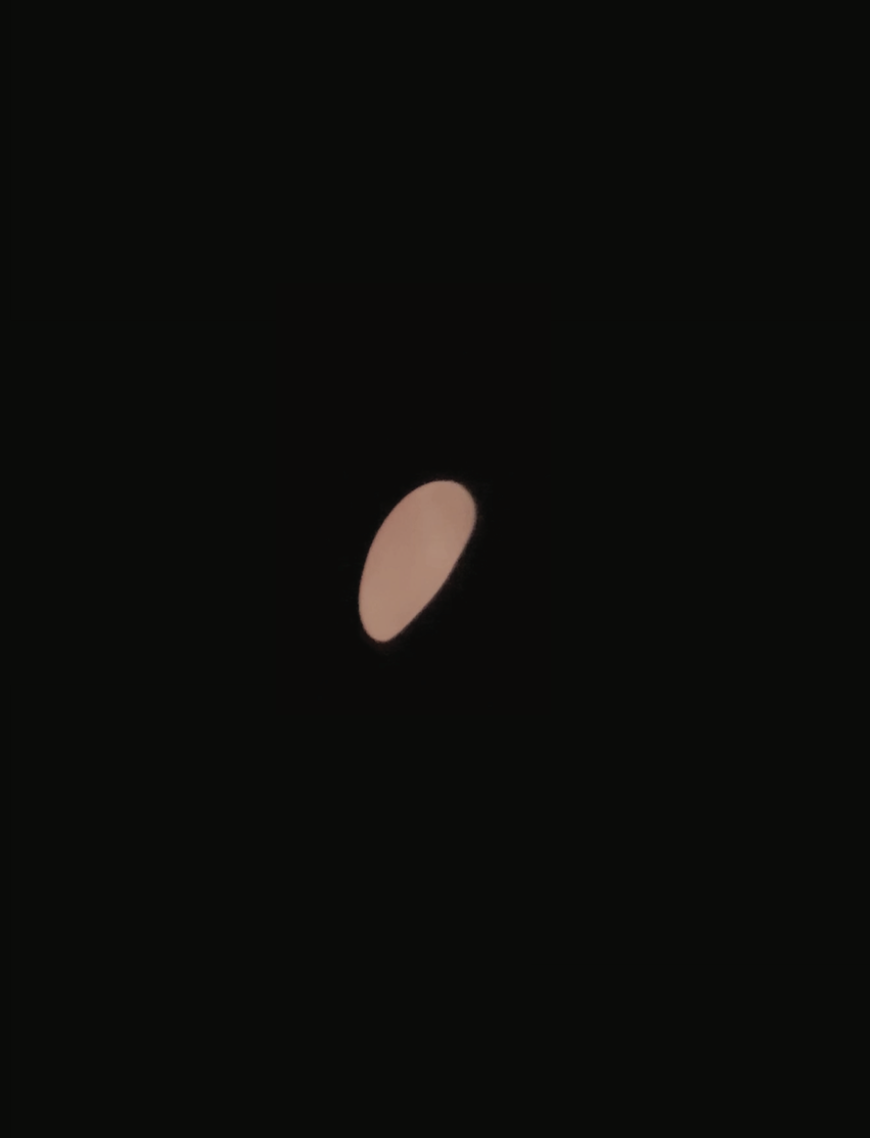
With Leia Chang and Bruce Arthur Jr. I explored more complex projections using two sensors placed on other muscles on the body.
Bruce then integrated this sketch of Leia’s with a Kinect’s camera. The camera can track up to 6 bodies, and it is surprisingly responsive. What it’s doing here is moving the position of two ellipses based on my hands. When my hands are together, both ellipses are black. They turn white the further my hands are apart.
We played.
It has many different effects.
It can be kind of comedic:
It can be kind of an act of drawing / erasing / revealing / hiding:
It can be kind of galaxial / reminiscent of curtain opening / or a monochrome James Turrell:
And each of them come with their own ‘choreographies’.
The overall style of movement seems to be determined in part by my own movement training, propensities combined with my sense of proprioception from sensor placement and wires too (as in how they feel on the body).
Setup
Both the pilot performance and these tests were done in room 468 at ITP.
For sense of scale, this is the room:
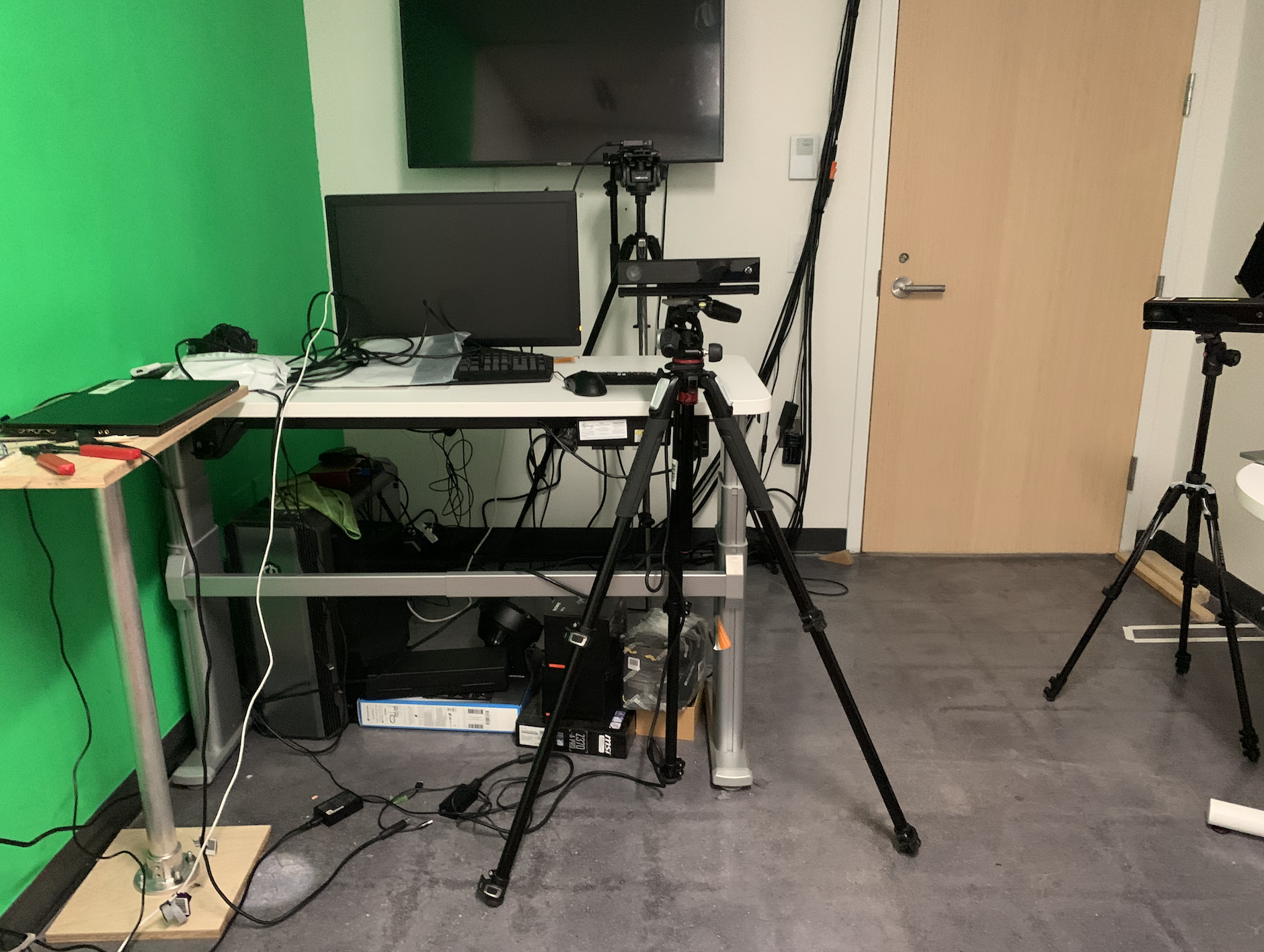

Staging
The project requires a pitch dark room to be shown in full effect.I’ve worked in room 468 and presented the first pilot version of the performance during midterms for What Happens Next there, and for my final performance on December 6, I’ll be using room 220 to allow for more than 5 people to be present in the audience.
For my performance on December 6, 2021, I’ve also added a ‘research wall’ that I reveal at the end of the performance by pulling the curtains back. It presents the various things that have informed the making of this piece (technologically, dramaturgically, artistically) to provide the audience with context to what would otherwise be a fairly abstract piece.
I reveal this wall by opening up the curtains at the end of the performance.

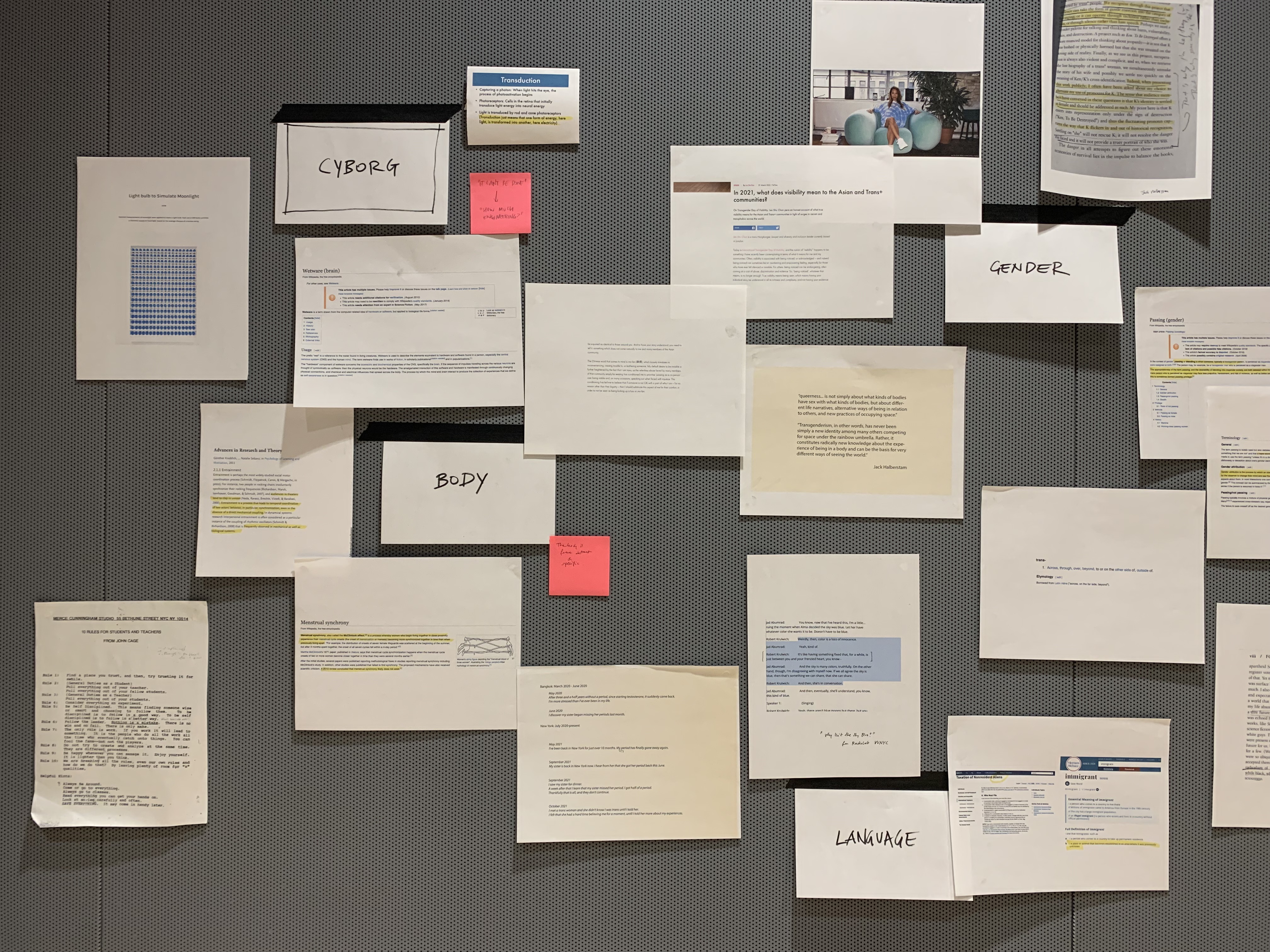
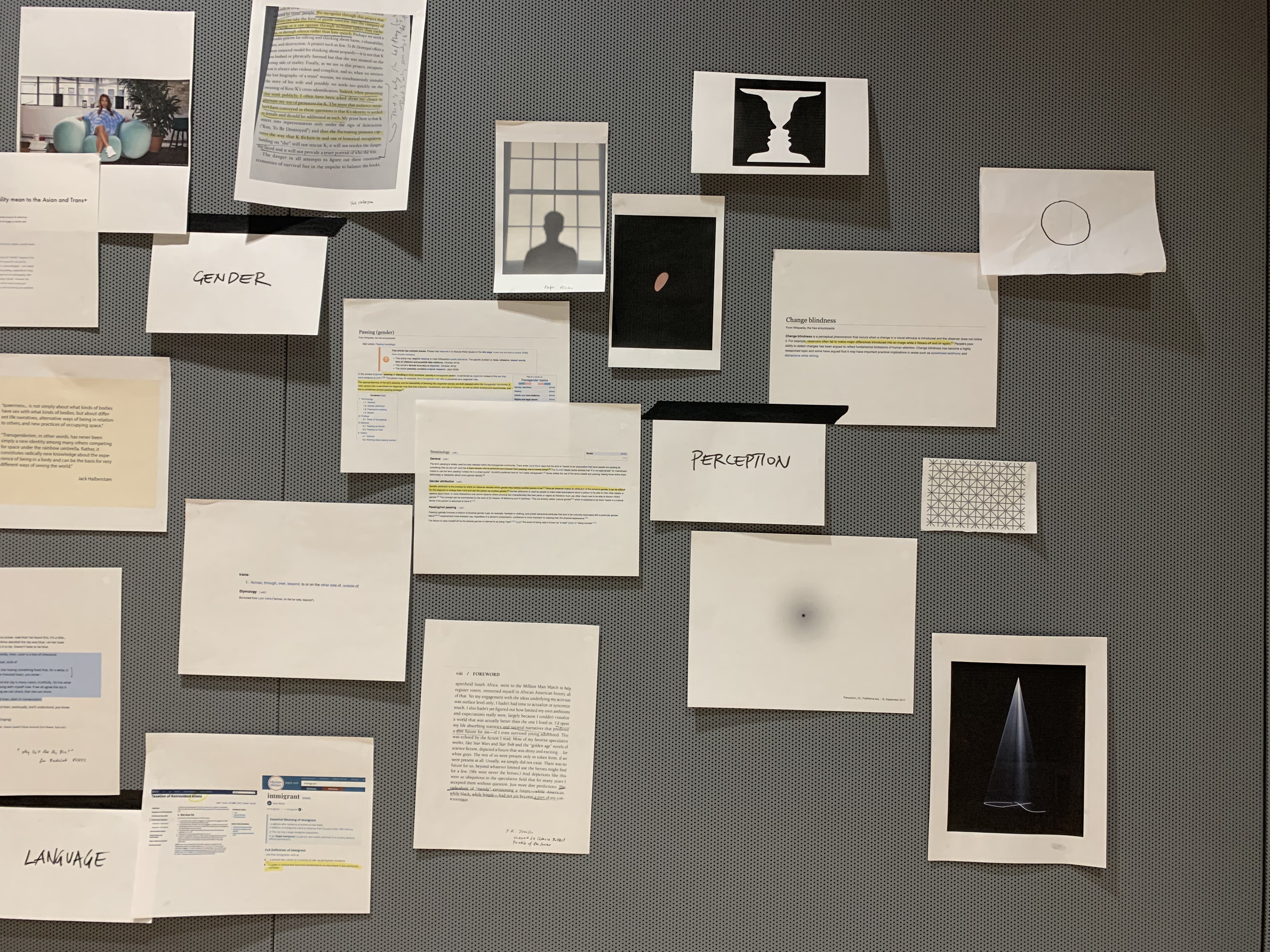
y period back).
This research was related to visibility as a trans person, ‘passing’, visual perception, bodily phenomena (including written documentation of my own experiences).
View of the projector, performance area, and research wall from the makeshift ‘tech booth’:

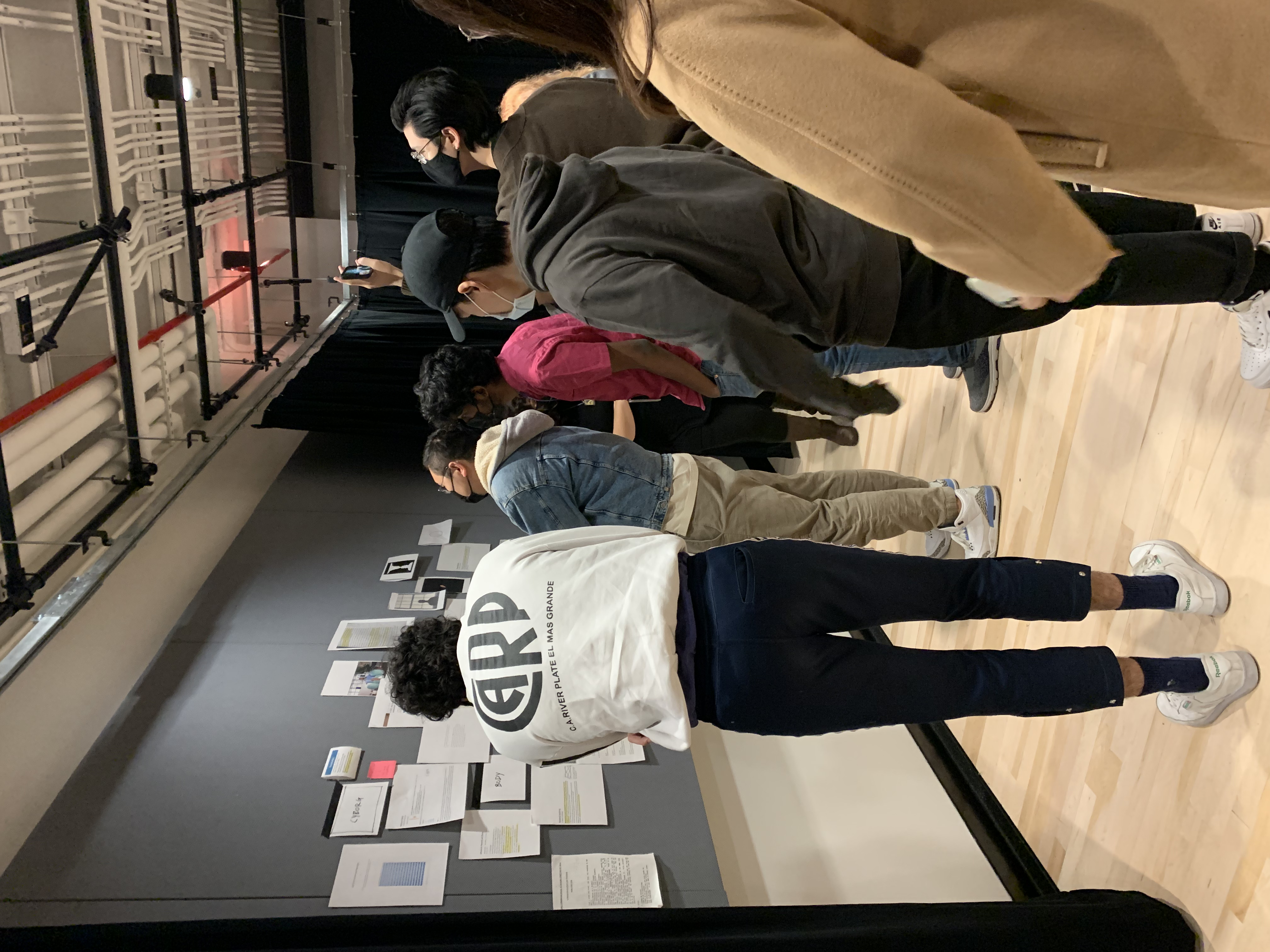
Photos by Josephine Wang.